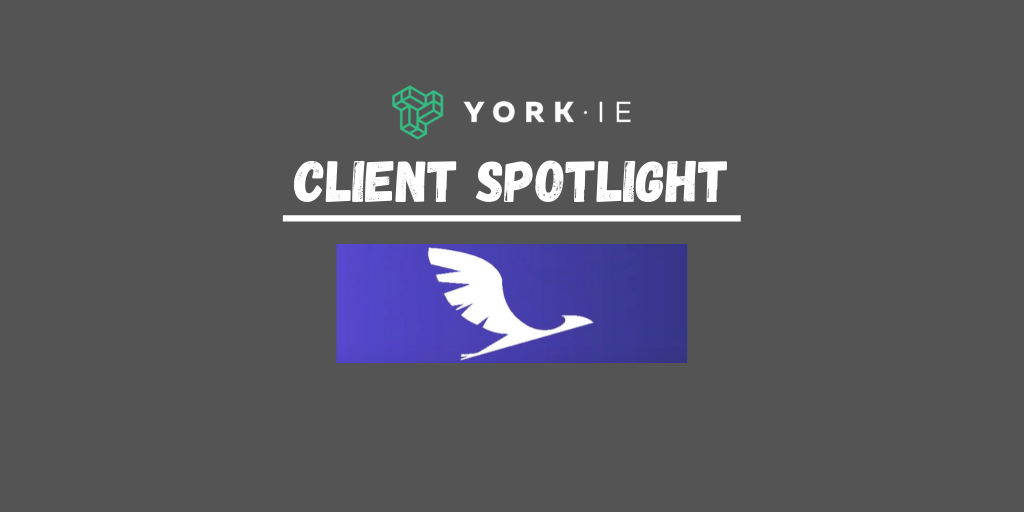At York IE, we work with entrepreneurs who are changing the world. Their vision, idea and company is what we invest in and work so closely along side with them to help in building something special.

Today, we’re excited to highlight some great news in our client spotlight. Serkan Özal, CTO and founder of Thundra was recently named as AWS Serverless Hero! We had a chance to speak to him this week about this honor, Thundra and the trends he’s seeing in the serverless market.

The AWS Hero program recognizes a vibrant, worldwide group of AWS experts whose enthusiasm for knowledge-sharing has had a real impact within the community. Heroes go above and beyond to share knowledge via social media, blog posts, open source projects, events, and user groups.
Congrats on being named AWS Serverless Hero! What does it mean to be this year’s AWS Serverless Hero?
Well, it has been more than 3 years since I stepped into the serverless area. I always stayed on top of the latest trends in cloud computing and serverless seemed interesting to me since its inception with the introduction of AWS Lambda. After I founded Thundra, my interest towards serverless became a daily routine. I have created open-source tools, engaged with the broader community all around the world, and tried to foster the adoption of serverless. It’s flattering to see that all my efforts are recognized by AWS by picking me as AWS Serverless Hero.
Playing off your new title of AWS Serverless hero, what’s one characteristic that you see that makes a startup founder a hero? Who’s your hero?
At the end of the day, all startups are founded with the same purpose: helping people solve real-life problems. We have founded Thundra again with this purpose when the problem was very limited visibility for serverless environments. Looking from that perspective, I can say that one characteristic of being an AWS hero is that willingness to help without asking for return. Even if you need to acquire new customers and generate revenue for your startup, your motivation should not be only monetizing people but helping them sincerely. When I first became acquainted with serverless, there were a lot fewer heroes (this also shows how fast the serverless community expands). It’s hard to give one name but I can say Ant Stanley was and still is an idol for me with his work to establish the serverless community starting from scratch with JeffConf. He’s the hero of heroes for me.
What motivates you to share and contribute to go above and beyond for the AWS community?
Short answer: to learn. People may think that heroes are always around to educate the folks in the forums, Slack, on-site events but the secret advantage of being active in the community is actually to be able to learn new use cases, problems, solutions, and so on. When I am trying to help people with technical challenges, I’m actually discovering new ways of approaching the known problems. The input I got from them let me invent new ways of tackling issues and some more knowledge. I incorporate these new findings into my daily technical tasks and improve myself and my product technically. This is how I define “growing with the community” and that’s what I am after since the beginning.
Tell us the story about how Thundra was founded and what you do today:
Thundra has a very interesting and unexpected story. Back in 2017, my intention was not to start a new business, create a unicorn startup, etc. I was a senior developer at Opsgenie building software with serverless and was suffering from limited visibility with my functions. So, I built an audit library to make things more smooth. That helped us tremendously to pinpoint the issues in production and sustain operational excellence. Then, we saw there are many other folks out there who also suffered from the same problem. That was the time that let’s build a UI for my project and turn it into a product. After I wrote the first blog post about why we built Thundra, we got very positive feedback that encouraged us to pursue the efforts. All of these led us to spin Thundra out of Opsgenie and establish it as a completely separate company.
Looking back to last three years, I’m delighted with all the things we achieved with Thundra. We expanded our service to all popular runtimes of Lambda by adding debugging and security on top of observability for serverless. Along the way, we saw that serverless architectures are widely adopted by organizations integrated with containerized environments. That pushed us to abstract our observability and security capabilities away from the compute platform and make it available for any applications running on any platform. We made the PoC with Java runtime and we are now working on the other runtimes. The ultimate aim is to position Thundra as the application observability and security platform that’s running on any compute platform (Kubernetes, containers, serverless on any cloud vendor). In this way, we are aiming to replace multiple tools that application teams use today to sustain operational health with application-level visibility and security rather than focusing on platform metrics.
What’s happening in the serverless market right now?
Serverless has a very different adoption curve in my opinion. For the first 2-3 years of it, it has been regarded as just a scripting service to be used for ephemeral jobs and applications. After a while, we started to see some real-life usages with real applications. Surprisingly, these use cases come from big enterprises such as Expedia, Coca Cola, Nike, and so on. The companies that could be regarded as laggards in other adoption curves became the early adopters. In the last 2 years, it’s been claimed that serverless would never be the main compute paradigm because it’s not suitable for some use cases like machine learning, high-performance computing, and so on. However, AWS is really serious about vanishing this idea. If you look at the latest releases such as cold start improvements in VPC, provisioned concurrency, and the latest shared file system support, it’s clearly visible that serverless will fit into any use case with all the improvements led by AWS.
I see that now many companies are in the process of migrating real-life applications to the serverless paradigm. It requires some re-architecting for sure but this is how it should be. You can not (or shouldn’t) just lift-and-shift an existing application to serverless. Instead, you will need to change your approach towards increased granularity of the services by dividing them into single-purpose services communicating via asynchronous events. It’s not only greenfield, I see a lot of brown-field serverless migration projects and I’m very excited about this.
What’s one recent challenge you solved and how? Describe how Thundra has helped its customers
Serverless abstracts the compute away from your local environment to the cloud and that’s perfect because it also enables you to outsource the operational concerns. But one important downside is that you lose some of the habits such as debugging as you could do pre-serverless days. I suffered a lot as a developer from limited debugging capabilities by digging into logs. I thought we should be able to debug from our IDE as we could do before.
That made me sit and innovate for weeks for this problem. Eventually, I came up with the PoC of debugging serverless applications as it runs in its native cloud environment (even in VPC) from the IDE. With my great team, we have turned into a product and released it in February this year. Using Thundra debugger for free, developers can now pause/play the application, see the application stack, and update it. I’m proud that we resolved a very big problem with serverless and flattered with all the positive feedback we got from community.
What is next for Thundra? Can you share your roadmap?
We are planning to be a complete application-level observability and security tool. We were born in a serverless environment but we never want to be a serverless specific tool. Since the day zero, we built our infrastructure and domain to be platform agnostic by focusing on application-level monitoring. In this context, we are planning to support operational excellence for applications on any environment from serverless to containers and VMs, from AWS to Azure and GCP.
I also want to mention our debugging focus. We believe that debugging is a key part of monitoring and tracing should be taken together as they are complementary to each other. Tracing helps you localize the problem over lots of services and requests, then debugging comes into play to pinpoint the issue. Therefore we put much effort into that to help developers debug their applications from development to production with our real-time and production debugging features. In the mid-term, we are also planning to enrich our debugging capabilities with more advanced features on more platforms.
Looking to the rest of 2020, what are the top priorities for the serverless community and any predictions you want to share?
Our top priority for serverless is to foster the adoption of serverless for many new use cases and usages by removing any obstacle. I can see that serverless becomes much more widespread because the software will be the backbone of the world with all the concerns around pandemic. Many more people will discover that serverless is the fastest and most reliable way of delivering value to the customers. I’m very happy to be part of this movement and will continue to learn and grow with the community.



